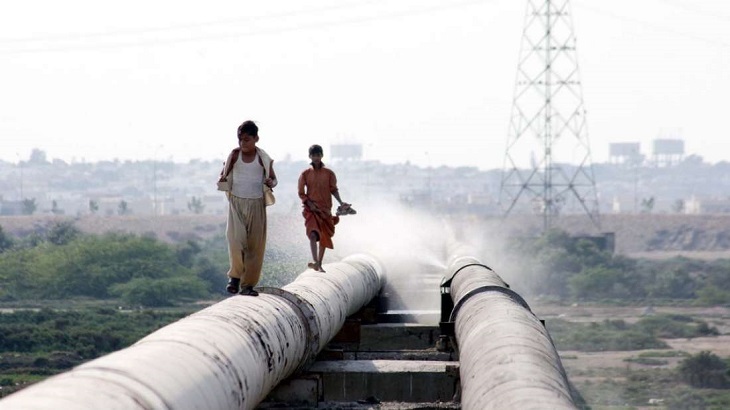By: Tom Hale/IFL Science Shockingly high levels of the toxic mineral arsenic have been found in the groundwater beneath huge parts of Pakistan, putting up to 60 million people at serious risk of developing arsenic poisoning from contaminated water.
New Research published in the journal Scientific Advances looked at samples gathered from almost 1,200 groundwater pumps between 2013 and 2015 in Pakistan’s Indus Valley, considered one of the cradles of civilization.
Areas in the south and east of the south Asian country were particularly bad, with many water samples containing more than 200 micrograms of arsenic per liter. The highest they recorded was 500 micrograms per liter. For perspective, the World Health Organization’s (WHO) safe guideline value is just 10 micrograms per liter, and anything higher than 50 micrograms per liter should be considered a danger.
“This is an alarmingly high number, which demonstrates the urgent need to test all drinking water wells in the Indus Plain,” first author Joel Podgorski, a geophysicist at the Swiss Federal Institute of Aquatic Science and Technology (EAWAG), said in a statement.

Arsenic concentrations measured in Pakistan’s groundwater. Arsenic exceeds the WHO guideline of 10 micrograms/liter in large parts of the Indus plain. Nearly 1,200 samples were collected for this study between 2013 and 2015. Podgorski et al., Sci. Adv. 2017;3: e1700935
Arsenic poisoning is no joke. Symptoms straight after being acutely poisoned can include vomiting, abdominal pain, diarrhea, numbness, and tingling sensations. Long-term exposure to even low concentrations can cause disorders of the liver, loss of cardiovascular and kidney function, developmental defects, neurotoxicity, diabetes, and various forms of cancer.
The cause of the contamination is natural. Arsenic leaches out of rocks and sediments, with small quantities becoming dissolved in groundwater as a result of weathering. The inorganic salts of arsenic are totally tasteless and odorless, yet extremely toxic to humans in its inorganic form.
Arsenic contamination of groundwater is a widespread problem in a number of countries, including the US, Argentina, Chile, Mexico, and other Asian countries, including China, India, and Bangladesh. In Bangladesh alone, up to 45 million people are at risk of being exposed to dangerously high arsenic concentrations, according to the WHO.
“Unlike other arsenic-contaminated areas of Asia, the arsenic release process in the arid Indus Plain appears to be dominated by elevated-pH dissolution, resulting from alkaline topsoil and extensive irrigation of unconfined aquifers, although pockets of reductive dissolution are also present,” the study concludes.




